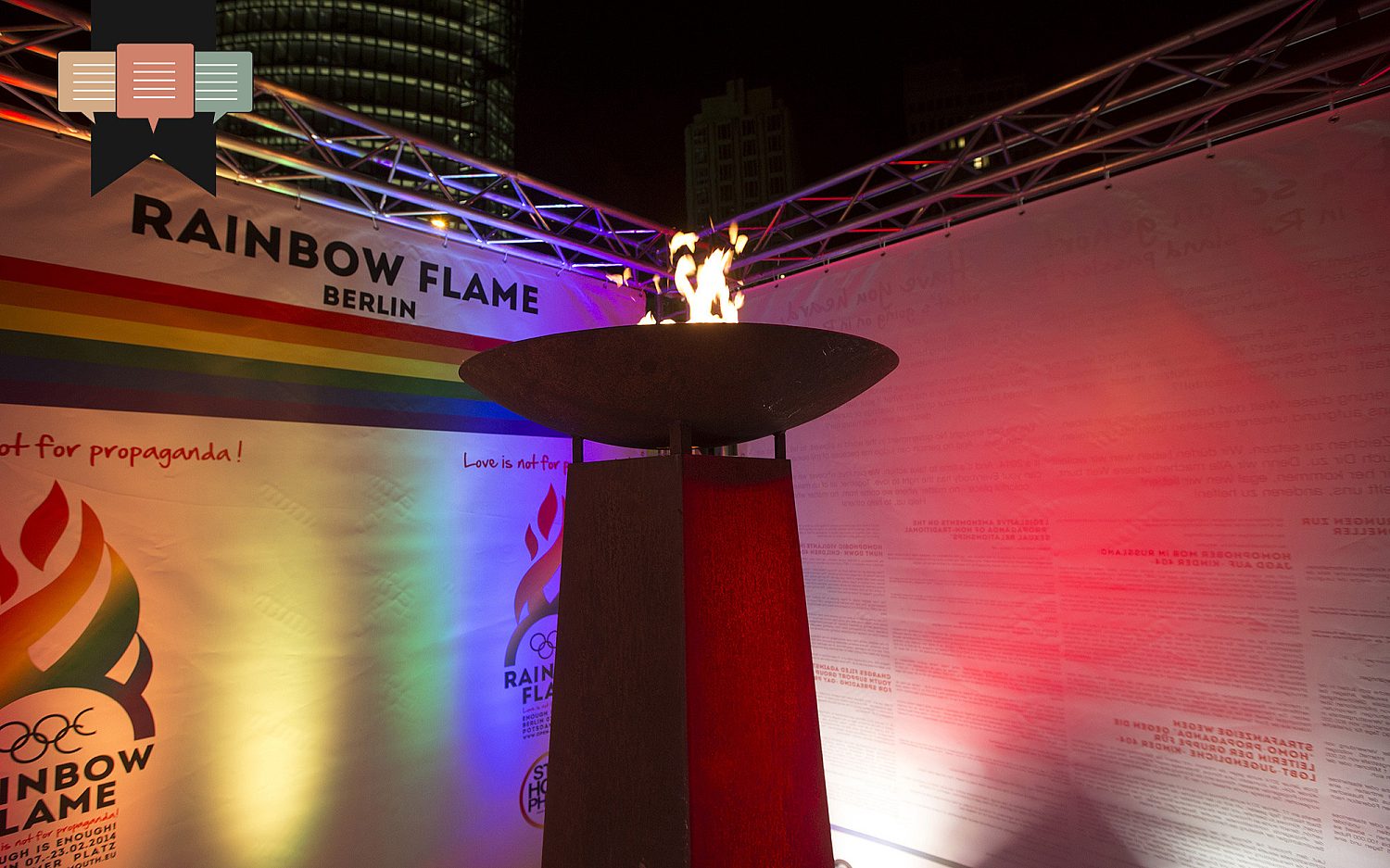Male and female He created them
Keeping men out of women’s sports is right, but not enough
A flame is lit during the Rainbow Flame protest on Feb. 7, 2014, in Berlin. Associated Press / Photo by Joel Ryan / Invision

Full access isn’t far.
We can’t release more of our sound journalism without a subscription, but we can make it easy for you to come aboard.
Get started for as low as $3.99 per month.
Current WORLD subscribers can log in to access content. Just go to "SIGN IN" at the top right.
LET'S GOAlready a member? Sign in.
In another confirmation that elections have consequences, the U.S. Olympic and Paralympic Committee has changed their eligibility rules to prevent men from competing in female athletic competitions. The change was made in the USOPC Athlete Safety Policy to conform with a Feb. 5 executive order from President Trump titled “Keeping Men Out of Women’s Sports.”
Most Americans were likely unaware that four male athletes have competed on or qualified as women for the United States Olympic team in the last two Olympics. In the 2020 Tokyo Olympics, postponed until 2021, Alana Smith competed in Skateboarding and Chelsea Wolfe qualified as a BMX alternate. In 2024, Nikki Hiltz competed as a distance runner and Raven Saunders competed in the shot put.
For some, the relatively small number of men who have qualified as women is proof that the entire controversy is much ado about nothing. But female athletes are quick to say that four men taking Olympic opportunities from women is four too many, and the public seems to agree with the female athletes. Polling shows that between 66% and 79% of Americans oppose allowing men who identify as women to compete with women (see here, here, and here ).
The International Olympic Committee (IOC) has been dealing with this issue longer than Americans have been debating it more broadly. The IOC created a policy in 2003 that allowed men to compete as women if they had received gender reassignment surgery, legally changed their gender, and had been receiving cross-sex hormones for two years. This policy was the initial attempt to accommodate people’s self-perception while still addressing the obvious physical differences between men and women, a reality that some on the left still try to deny.
But that policy was not satisfactory to gender activists who believe it is discriminatory to say male genitalia disqualifies you from being female. So, in 2015, the IOC changed its policy and decided to use testosterone levels exclusively to determine if an athlete was male or female. No longer was surgery, hormone treatments, or a legal change required. Why are testosterone levels more than determinative than genitalia, reproductive system, or chromosomes at determining whether you are male or female? No one knows. But life gets complicated quickly the moment we decide we don’t know the difference between the sexes.
The U.S. Olympic Committee never adopted its own rules to explicitly allow men to compete as women, but it followed IOC rules, which opened the door for it to happen until Trump brought it to an end. While compliance with Trump’s executive order is likely reluctant for some, the fear of losing government funds is forcing their hand.
Notably, new rules governing Olympic participation is not the only impact from President Trump’s executive order protecting women’s sports. The NCAA also changed its policies to prevent biological males from competing in women’s events. In addition, the Education and Justice departments formed a Title IX investigative team to see where boys have made their way into girl’s spaces in schools.
While it is a real injustice when women are denied lifelong dreams on the account of men with identity challenges, those are not the greatest harms we will face should our moment of temporary insanity become prolonged. Indeed, the inability to tell the difference between men and women is a symptom of the fact that we no longer know who we are as humans. It’s a sign that we have no idea where we came from, which means we have no idea what our purpose is. That is a civilizational crisis.
In a real sense, men in women’s sports are the unsightly spot on the skin that reveals a cancer underneath. Our vanity may wish to address the blemish, but what it signifies is far more serious. So, let’s be thankful for the improvement this rule change represents, but let’s keep going. After all, real cultural health doesn’t merely mean our women’s sports teams are comprised exclusively of women, but it means remembering where we came from and what our purpose is.
These daily articles have become part of my steady diet. —Barbara
Sign up to receive the WORLD Opinions email newsletter each weekday for sound commentary from trusted voices.Read the Latest from WORLD Opinions
R. Albert Mohler Jr. | Response to release of security video shows deep division between liberals and conservatives
Barton J. Gingerich | The deeply rooted problem with a convert to Roman Catholicism administering the Lord’s Supper in a PCA church
Nathan Leamer | We should view artificial intelligence as a potential opportunity for the Church
Joe Rigney | Slayings in Charlotte, Minneapolis, and Nashville reveal a deep spiritual abyss in America






Please wait while we load the latest comments...
Comments
Please register, subscribe, or log in to comment on this article.